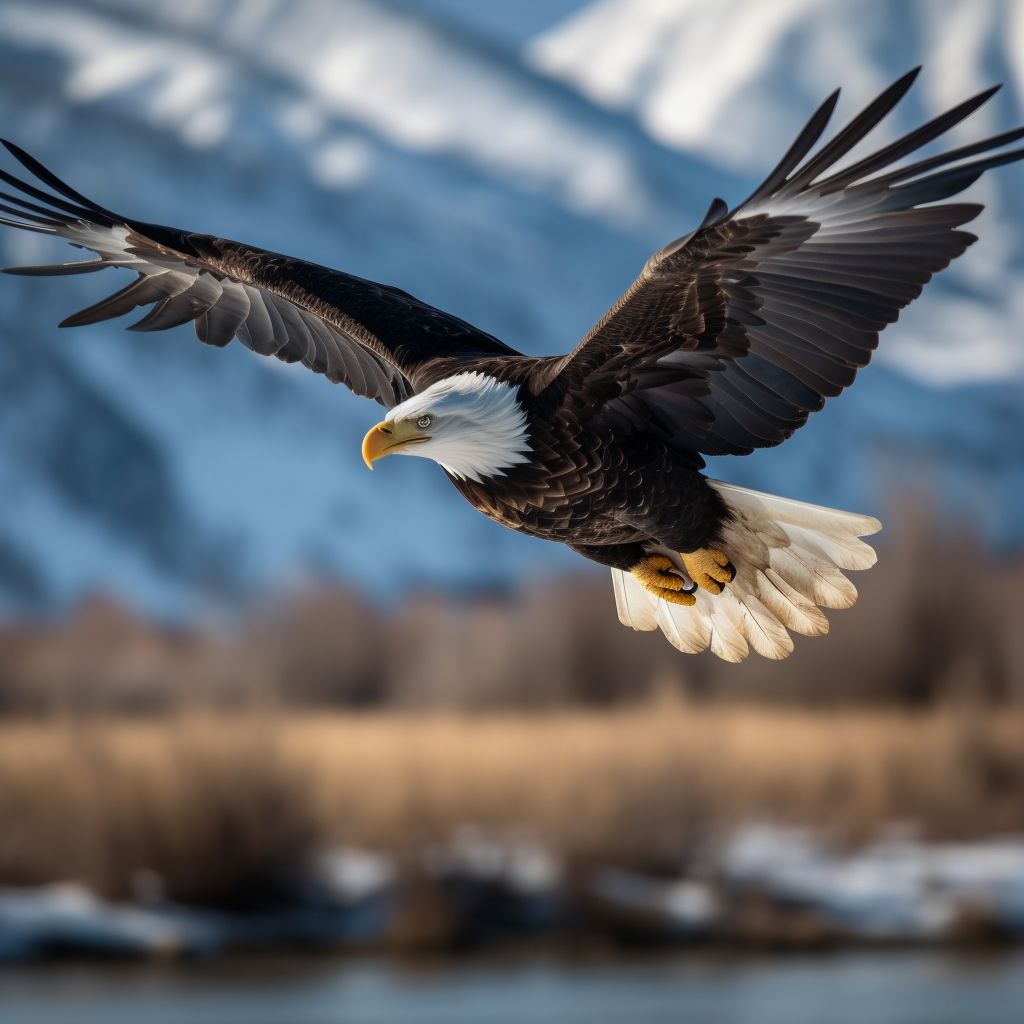Bald Eagle
The Bald Eagle (Haliaeetus leucocephalus) is a species of sea eagle native to North America, recognized for its striking appearance and majestic presence. As a symbol of strength and freedom, the Bald Eagle was chosen as the national emblem of the United States in 1782. This powerful bird of prey has played a significant role in both American culture and the natural environment.
Description and Distribution
Adult Bald Eagles are characterized by their brown bodies and wings, white head and tail feathers, and large, yellow beak. Juvenile Bald Eagles are predominantly brown, with white mottling on their body and wings. They reach full maturity and develop their distinctive adult plumage at around four to five years of age.
Bald Eagles are found throughout North America, from Alaska and Canada down to northern Mexico. They inhabit areas near large bodies of water, such as lakes, rivers, and coastal regions, where they can find their primary prey: fish. Bald Eagles are known to build large, sturdy nests in tall trees, often returning to the same nesting site year after year.
Diet and Hunting
Bald Eagles are primarily piscivorous, feeding mainly on fish, which they catch by swooping down and snatching their prey from the water with their sharp talons. They are also known to eat smaller birds, mammals, and carrion. The Bald Eagle's exceptional eyesight allows it to spot potential prey from great distances.
Behavior and Reproduction
Bald Eagles are monogamous, forming long-term pair bonds that typically last for life. Pairs engage in spectacular aerial courtship displays, locking talons and cartwheeling through the air. During the breeding season, Bald Eagles build or refurbish their large, stick nests in tall trees close to water sources. Females usually lay one to three eggs, which both parents incubate for around 35 days. After hatching, the eaglets remain in the nest for 10 to 12 weeks before fledging.
Conservation Status
In the late 19th century, Bald Eagle populations faced several threats, including habitat loss, hunting, and the effects of environmental pollution. However, as a symbol of the nation, efforts were made to protect these majestic birds and their habitats. Today, Bald Eagles are protected under the Bald and Golden Eagle Protection Act, which prohibits the killing, selling, or possession of the species without a permit.
Cultural Significance
The Bald Eagle has been a powerful symbol of the United States since its adoption as the national emblem in 1782. It represents freedom, strength, and resilience and is featured prominently on the Great Seal of the United States, as well as on various coins, stamps, and official documents. The Bald Eagle has inspired countless artists, writers, and inventors throughout the years and remains an enduring symbol of American pride and identity.
Conclusion
The Bald Eagle is a remarkable species that has captured the imagination of the American people for centuries. Its striking appearance, majestic presence, and association with freedom and strength have made it a beloved and revered symbol of the nation. As we continue to learn more about these incredible birds, efforts must be made to protect and preserve their habitats, ensuring that future generations can witness the awe-inspiring sight of a Bald Eagle soaring high above the land of the free.

